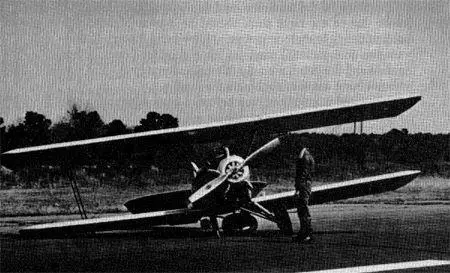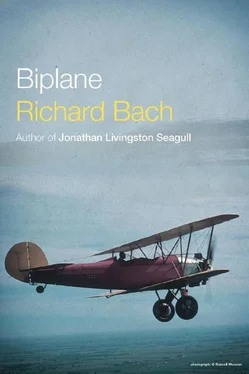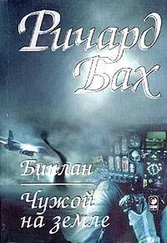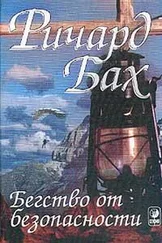Ричард Бах - Biplane
Здесь есть возможность читать онлайн «Ричард Бах - Biplane» весь текст электронной книги совершенно бесплатно (целиком полную версию без сокращений). В некоторых случаях можно слушать аудио, скачать через торрент в формате fb2 и присутствует краткое содержание. Город: New York, Год выпуска: 2012, ISBN: 2012, Издательство: Scribner, Жанр: Современная проза, на английском языке. Описание произведения, (предисловие) а так же отзывы посетителей доступны на портале библиотеки ЛибКат.
- Название:Biplane
- Автор:
- Издательство:Scribner
- Жанр:
- Год:2012
- Город:New York
- ISBN:978-1-4516-9744-5
- Рейтинг книги:3 / 5. Голосов: 1
-
Избранное:Добавить в избранное
- Отзывы:
-
Ваша оценка:
- 60
- 1
- 2
- 3
- 4
- 5
Biplane: краткое содержание, описание и аннотация
Предлагаем к чтению аннотацию, описание, краткое содержание или предисловие (зависит от того, что написал сам автор книги «Biplane»). Если вы не нашли необходимую информацию о книге — напишите в комментариях, мы постараемся отыскать её.
Biplane — читать онлайн бесплатно полную книгу (весь текст) целиком
Ниже представлен текст книги, разбитый по страницам. Система сохранения места последней прочитанной страницы, позволяет с удобством читать онлайн бесплатно книгу «Biplane», без необходимости каждый раз заново искать на чём Вы остановились. Поставьте закладку, и сможете в любой момент перейти на страницу, на которой закончили чтение.
Интервал:
Закладка:
After the sun is high and the spell fades, one’s fuel is gone. The white needle is at the E, the little indicator cork ceases its bobbing, a red low-level-warning light glares above a fuel counter. And in a minute or five or ten, the tires thud again onto the grass or scream a bluesmoke cry against the concrete of a once-forgotten runway. Mission done, flight over. Chalk up another hour. Pencil and logbook for a moment busy. But though the earth once again spreads beneath our feet, and the unnatural quiet of an engineless world surrounds us, there is new fuel to be hosed into tanks, and another page in the log to be filled.
To a pilot, the most important thing in the world is flight. To share it is the gift without price. Therein is a key to the sometimes wild acts of young pilots. They fly under bridges, they buzz housetops, they loop and roll their airplane much closer to the ground than is safe. They are a major concern of military flight-training bases, for such action reflects a lack of discipline, and occasionally means the loss of student and airplane. But his thought is to give, to share joy with those he loves, to share a truth. For pilots sometimes see behind the curtain, behind the veil of gossamer velvet, and find the truth behind man, the force behind a universe.
In the bright thread are woven four billion lives. Now and again, a man will see a certain brightness beyond the curtain and go spinning away into the depths of reality. We who remain watch him go, marvel for a moment, and return to our stations at our own crossthreads in the woof and the warp of a sparkling illusion.
For even in an airplane we see too often imperfectly. With advancing invention, with cockpits closed and navigation instruments and radio and new electronics, the problem of flying has become something to be solved more and more within an arm’s distance of the pilot. Drifting off course? A needle shows it, points the error, and all the pilot must do to see it is to look within a three-inch face of glass. Concerned about weather ahead? Dial a frequency on the radio, call a meteorologist and ask expert advice. Airplane slowing in the air, approaching a stall? A red light flashes on the instrument panel, a warning horn blares. We look outside to the sky only when we have time to enjoy the view, and if we don’t want to be bothered with the view, we needn’t look outside from takeoff till touchdown. It is this kind of flight over which the manufacturers of flight simulators can boast, “Impossible to tell our trainer from flight itself!” And so it is. Those who define flight as a series of hours spent in attention to the moving gages of an instrument panel cannot tell the difference. The only thing that is missing is the wind. The heat of the sun. The canyons of cloud and sheer white walls rising solid at each wingtip. The sound and the sting of rain, the freezing cold of altitude, the sea of moonlight in its bed of fog, the stars untwinkling and ice-hard in a midnight sky.
So. The biplane. Is it the better way? If the Parks flies too slowly, there are no warning horns or flashing red lights. Just a shudder in the control stick and it turns into a machine unwilling to be controlled, suddenly aware that it is heavier than the air. One must be careful and alert for the shudder. One must look outside, for outside is flight itself, the moving through the air and knowing it. Especially, knowing it.
Navigation is goggles down, look over the side, down through the churning winds. The railroad: so. The river crossing: so. But the lake, there should be a lake here. Perhaps there are headwinds.
A check on the weather is a constant thing. The clouds mass and grow together, lowering into the hills. Slanting columns of rain, where earlier there was no rain. What to do, pilot, what to do? Beyond the hills, the cloud may thin, or break. But then, beyond the hills, the cloud can lower to brush the grasstops ragged and soak them in rain. Hills are green coffins for the airplanes and pilots who judge wrongly. Beware the hills when the cool grey mist is pulled over your eyes.
Decide, pilot. Land now? Choose the pasture for soft touchdown and certainty of longer living? Or push on, into the grey? This is flight: decisions. And knowing that sooner or later an airplane must always come to rest.
* * *
We turn south, the Parks and I, to follow the Atlantic coastline. The beach is wide and hard and deserted, and the only sounds across it are the sounds of the wind and the waves crashing and the cry of a seagull and the brief windy passing roar of an airplane flying. The air is salt air, and salt spray leaps toward the tall wheels of the biplane. Here for a hundred miles we can fly in comfort with the wheels skimming the wave tops, for the old fliers’ caution—always be able to land safely should the engine stop—is satisfied by the wide smooth expanse of sand to our right. There is no greater security for a pilot than the security of flat land nearby. Flat land equals peace of mind and serenity in any situation. Fail the engine, bring the downdraft, bring the storms with thunder rolling; with a level field nearby, the pilot has no worry. A circle once to lose altitude, a gentle lifting of the nose, and airplane and pilot are blessed with their only time without the pressure and the need for constant motion. To fly above flat fields is to fly without pressure, and is the most relaxed flying that a pilot can know. And now from horizon to horizon as far as I can see ahead is the broad flat landing beach of South Carolina.
But, oddly enough, the biplane does not feel right, as if she is not glad to be here. There is foreboding in her, a sense of caution that dampens even the assurance of the infinite beach strip ahead. What could be wrong? Why, I simply am not used to her yet, or she to me. It will take time, it will take a few hours to fly this beach and enjoy it to its full.
A brief inlet, with a single small sailboat drifting idly along. We roar over its mast, with one quick wave to the skipper at the helm, and catch his wave in return.
The shape of the land now, and of the beach, is familiar. I know that to the right there should be a swamp soon, and soon to the right there is a swamp. How can I know? A map can give no such familiarity, for ink and colored lines, unless studied and imagined, are only ink and colored lines. And this is familiar, the curve of the beach, the swamp.
Of course! I have been here before! I have flown this very stretch of beach; and the vagueness and the familiarity come from a different viewpoint. I have flown the beach before at an altitude many times higher than the biplane will ever reach, from eight miles in the air, and looked down upon these same sands and have noted with satisfaction that my groundspeed was six hundred miles per hour. A different day then, and a different airplane. Fine days, those. Of strapping into thirteen-ton fighters and riding the twisting thundering heat of a turbine engine. Climb straight up, come blasting straight down through the speed of sound.
A good life, and it was sad to leave the fighters with their great speed and their brilliant glory. But I nodded my head to circumstance and the reins were snapped and the days of machmeters and gunsights faded behind me.
Yet the high land is the same no matter the vehicle. With a whirling thrashing propeller again in front of the cockpit instead of a spinning turbine behind, I discover that the only real difference is that a tank of fuel lasts three times as long, and in place of speed I am the master of time, and a new kind of freedom.

Suddenly, on the beach below a sunrise biplane in the world of now, a house. Two houses. Five, and a wooden pier stretching out into the sea. A water tower, and the name, CRESCENT BEACH. We have arrived. Time for fuel and a sandwich.
Читать дальшеИнтервал:
Закладка:
Похожие книги на «Biplane»
Представляем Вашему вниманию похожие книги на «Biplane» списком для выбора. Мы отобрали схожую по названию и смыслу литературу в надежде предоставить читателям больше вариантов отыскать новые, интересные, ещё непрочитанные произведения.
Обсуждение, отзывы о книге «Biplane» и просто собственные мнения читателей. Оставьте ваши комментарии, напишите, что Вы думаете о произведении, его смысле или главных героях. Укажите что конкретно понравилось, а что нет, и почему Вы так считаете.





